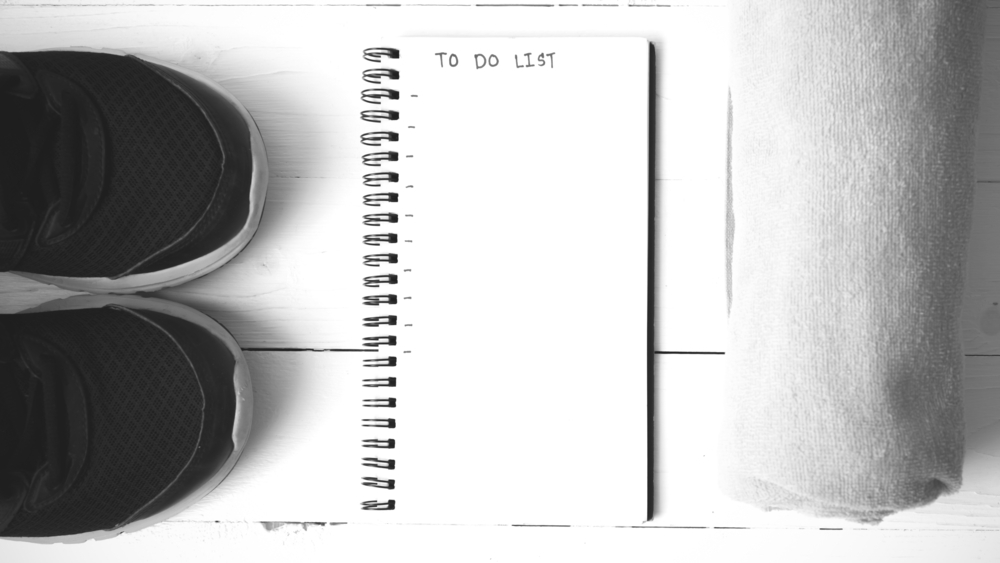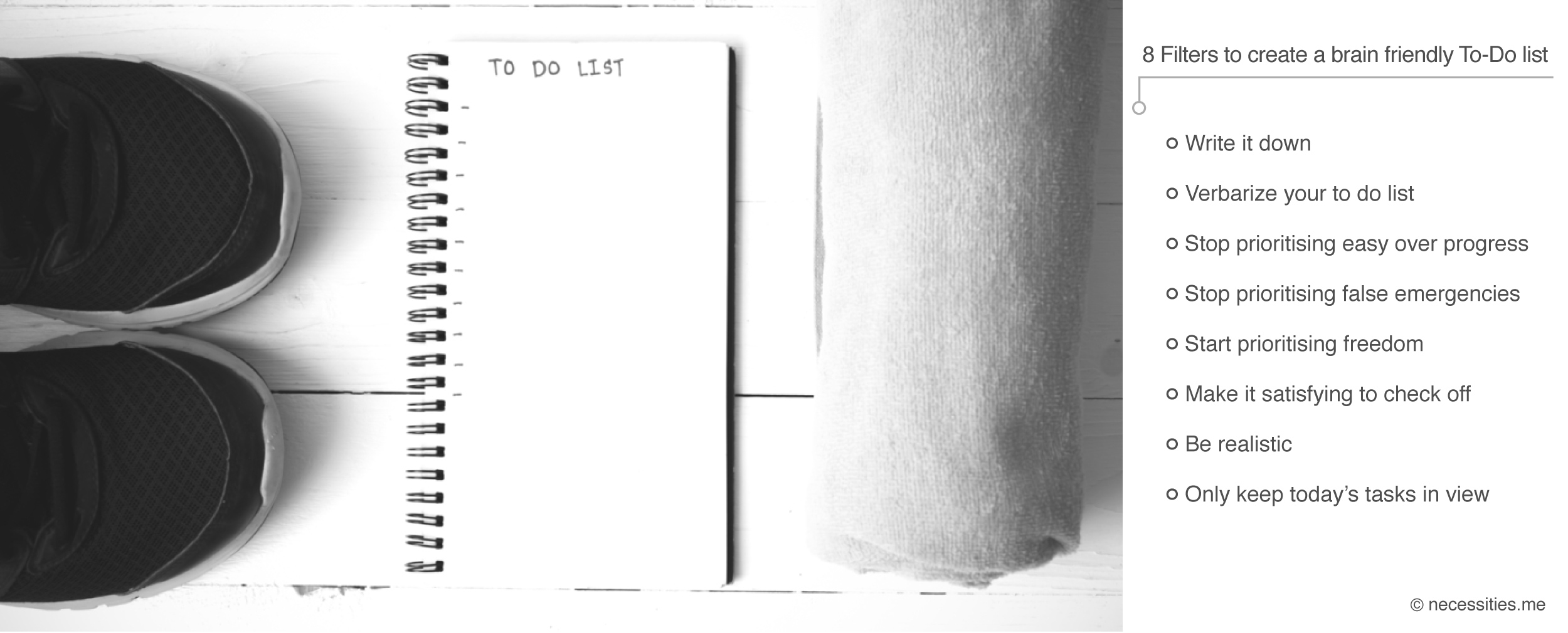8 Filters to create a brain friendly To-Do list
Write it down
Never waste your brain’s working memory to hold tasks and ideas. Have a process of capturing your to-do’s. You are not required to immediately begin executing decisions to complete to-do items at this stage. This is a simple process of capturing items rather than having them float in our mind.
Verbarize your to do list
Marie Forlio introduced us to this concept (yes it’s a play on words for when you need to ‘verbarize’ your to-do list). Start every item on your to-do with a verb. Pick small, actionable and doable verbs. Items on your to-do list are to comprise of things that you can accomplish in one sitting or one step. For example ‘plan a birthday party’ is a project and will require multiple steps to complete. Hence in this case identify the first step that you need to take and verberize that. Refer to the example below,
- Do Website – Send email to web developer
- Supermarket – Buy milk and coffee
- Cleaners postpone – Call cleaners to reschedule
- Food, dinner – Cook pasta for dinner
- Plan a birthday party – Prepare a guest list
Journaling tip: Review your to do list and answer the following question – is my to do list verbarized? Can I accomplish items on my to-do list in a single step or do I need to break them up? Make requisite adjustment based on your findings.
Stop prioritising easy over progress
We love this idea from Brendon Bruchard, who advocates that we must stop prioritising easy over progress. If your to-do list is as long as your arm it’s not necessarily guiding you towards productivity and efficiency. We must learn to differentiate between high value and low value tasks. Identify between three to five items on your to-do list that will deliver a forward momentum and prioritise these items first.
Journaling tip: Take a look at your to-do list and answer the following question – what three things (or five) must happen today that will be a real movement forward? What will really progress me today? (Set your top three work priorities in My Wellness Journal)
Stop prioritising false emergencies
The number of hours in a day is limited; when we are spending this precious resource prioritising other people’s emergencies we make little progress on our own initiatives. These are distractions that we can learn to mitigate. Here are some steps that you can take to prevent sudden distractions from taking over your to-do list. Don’t reprioritise your life to fit in someone else’s false emergency.
- Learn to say NO
- Ask questions about the “real due dates” of deliverables that are assigned to you.
Journaling tip: Take a look at your to-do list and answer the following questions – which items on my to-do list can I say no to? Which items on my list can I postpone?
Make it satisfying to check off
If you are using a computer or an app the “swoosh sound” is a great reinforcement to keep going. Alternatively crossing off or highlighting tasks that have been completed can be a great reinforcement to keep going.
Start prioritising freedom
What are you striving for if you cannot prioritise your own freedom? We are referring to emotional, physical, mental, and financial freedom. It’s important that we prioritise our own psychology every day and make space to dream, feel energised, take a nap, meditate or do other things that help us sense freedom.
Journaling tip: Take a look at your to-do list and answer the following question: Have I prioritised my own freedom today? (Set top three daily self-care goals in My Wellness Journal)
Be realistic
It’s important to be realistic about what can be achieved in a day. When you begin feeling overwhelmed simply looking at your to-do list, use prioritising steps outlined earlier (stop prioritising easy over progress, stop prioritising false emergencies and start prioritising freedom) to cull back. They will help you refocus and stop the energy drain.
Only keep today’s tasks in view
You might be maintaining a master list for all tasks that you need to accomplish during the week, month or year. Once you have decided what you need to accomplish during the day work off that list and hide the rest. You need your brains processing capacity to complete these tasks and not to get lost in excess information. Keeping today’s tasks in view will help you achieve this objective.
Words To Grow By
Todd Stocker
“Before you eat the elephant, make sure you know what parts you want to eat.”






